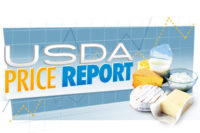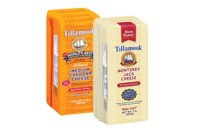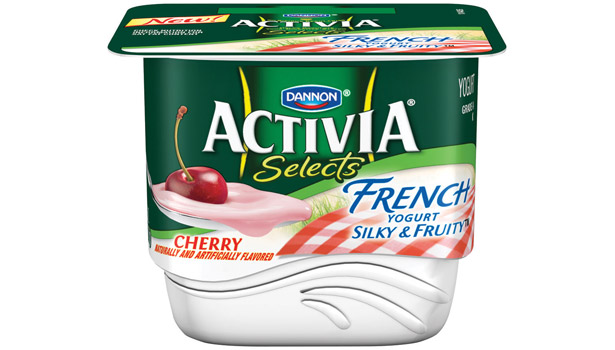The Cultured Craze














But, that was then, this is now.
Now, the various cultured product segments are heating up the fridge aisle with items that go above and beyond the same-old, same-old. Plain and original yogurt becomes fruit on top and drinkable. Cottage cheese boasts high protein and probiotics. Even sour cream and dips entered the action with all-organic, party-pleasing flavors.
Find out what products are creating a craze for cultured.
Yearning for yogurt
Whether it’s filled with fruit, created as a snack or available in drinkable form, many of today’s yogurt products deliver value-added characteristics.
“‘Me too’ products will have a difficult time making it to the shelf unless there is a consistency in quality and a substantial difference in price benefit,” says Ken Strunk, general manager and CEO for Redwood Hill Farm & Creamery, Inc. “Also, a style that originates from a particular region of the world has shown market stride.”
To stand out from the crowd, the Sebastopol, Calif., processor added premium-priced organic fruits to its goat milk yogurts.
“We just celebrated the one-year anniversary of the launch of Green Valley Organics line of lactose-free yogurt, kefir and sour cream,” Strunk says. “This new line truly did create a new market segment that hadn’t been filled previously.”
It also unveiled a bold new look to its product packaging with “Camellia,” the owner’s Saanen goat, contrasted against a vibrant background of colors and hand-drawn illustrations. The new logo, Flourish, resembles the company’s custom blend of 10 live active probiotic cultures.
“It’s a bright new look that focuses on our commitment to use only the highest quality ingredients, starting with 100% fresh goat milk, for which we pay the highest price in the industry,” Strunk says, “and now the addition of organic fruits giving consumers something truly special.”
Also tapping into the fruit trend is Ehrmann USA, LLC, Mishawaka, Ind. Its all-natural Bavarian low-fat yogurt, which is made fresh out of its Brattleboro, Vt., plant, comes in a 5.3-ounce cup with a dual-chamber that separates the yogurt from the fruit (blackberry-pomegranate, blueberry, cherry, peach and strawberry). Each flavor contains 150 calories or less, 7 grams of protein per serving and 1.5 grams total fat.
“We have found that U.S. consumers are highly interested in innovative yogurt concepts of old-world European origin,” says Carolin Widmann, product manager. “In addition, there are an increasing number of consumers being conscious about their health and body. Thus it is important to the U.S. consumer that they purchase low-fat and all-natural products.”
Hammond Dairy, LLC, Amenia, N.Y., specializes in yogurt that can be consumed either for breakfast or dessert. Made with un-homogenized whole milk, the selection contains five kinds of active cultures and is said to either enhance a bowl of granola or be scooped into a bowl of ice cream as a sundae-like topping. It comes in strawberry, raspberry and peach offerings.
Aside from value-added attributes, drinkable yogurts are also hitting high notes with consumers.
Dallas-based Lucky Layla Farms’ portfolio includes a team of drinkable yogurts that contain no powdered milk or whey, extenders or thickeners.
“We pride ourselves on our environmentally sound farming practices. Our Guernsey and Jersey cows are pasture-based and fed and we use non-commercial fertilizers,” says Todd Moore, owner/farmer. “Technically, our product is a ‘luxury item’ and isn’t always on grocery lists as a kitchen staple.”
Meanwhile, other yogurt producers are developing products that specifically target the health-conscious consumer.
For instance, Dannon Co., White Plains, N.Y., expanded its Activia family with Activia Selects, which includes Activia Selects French, Activia Selects French Fruit on the Bottom, Activia Selects Greek, Activia Selects Parfait and Activia Parfait Crunch, which blends Activia low-fat yogurt, fruit pieces and low-fat crunchy granola into a 6-ounce container. Activia Parfait Crunch comes in Strawberry & Granola, Mixed Berry & Granola, Vanilla & Granola and Peach & Granola.
“Specialty products seems to be a trend that is here to stay,” says Michael Neuwirth, senior director of public relations. “And, as the U.S. market’s first French-style yogurt, Activia Selects French is an excellent example of Dannon’s innovation to bring consumers new taste and texture options in the category.”
Dannon also re-branded its Greek-style yogurt offerings, Dannon Oikos and Activia Selects Greek, to combine the functional benefits of Activia with the texture of Greek-style yogurt, Neuwirth says.
“Consumers continue to gravitate toward Greek yogurt because of its inherent health qualities (high protein, low fat) and exceptionally thick and creamy taste,” he adds.”
For its part, Stonyfield Farm grew its Pure Pleasures brand to include caramel and chocolate offerings, expanded its Organic Oikos 0% Fat line to include new flavors such as superfruits and peach mango and extended its Organic Oikos platform with drinkable yogurt and frozen yogurt options.
Stonyfield also developed a 100-calorie recipe for its Smooth & Creamy 0% Fat yogurts, which are naturally sweetened with organic sugar and organic stevia.
“Despite the fact that Greek yogurt is the big news in the yogurt category, and despite the pressure it has put on other category segments, Greek isn’t the only news and it still isn’t for every yogurt eater,” says Kristen Deshaies, senior director of marketing for the Londonderry, N.H., processor.
To better speak to children, in March, Stonyfield redesigned the packaging for YoBaby yogurt with its “Love on a spoon” campaign, “designed to connect the product’s health features and benefits (a yogurt made with pure whole organic milk produced without antibiotics, synthetic hormones or toxic pesticides) with mom and dad’s joyful love of feeding their baby,” she adds.
Agro Farma, the Norwich, N.Y.-based maker of the Chobani brand, also crusaded for children with its Chobani Champions lineup of Greek-style yogurt. Each 3.5-ounce cup is packed with 100% natural ingredients, low-fat yogurt and real fruit. It comes in Honey-Nana and VeryBerry.
Further tapping in to the Greek-style trend, Chobani released Chobani Kitchen, which is designed to help stimulate creativity in the kitchen with some easy-to-follow recipes incorporating Chobani yogurt. It also unveiled Chobani Fit, a program designed to help educate physically active consumers about the benefits of consuming Chobani as a post-workout recovery snack.
“We receive several consumer-generated recipes and suggestions that use Chobani as a replacement for higher calorie ingredients,” says John Heath, vice president of new ventures and innovation. “We feel it’s really up to us and the category to help educate the rest of consumers on [the] versatility of Greek yogurt and to come up with new and innovative ways to help consumers to enjoy it.”
Tillamook County Creamery Association touted the better-for-you health trend by introducing “a light line of yogurts designed to meet consumer demand for simple, healthy and natural products,” says Mary Cecchini, brand communications manager for the Tillamook, Ore., organization. “The new light yogurt line [which will be available next year] will have fewer calories than our low-fat yogurts and will be free of artificial colors, flavors, sweeteners, high-fructose corn syrup and will be made with milk from cows not treated with artificial growth hormones.”
Tillamook also redesigned its 6-ounce yogurt cups to reflect the company’s new recipe (no artificial colors, no artificial flavorings, no artificial sweeteners, no high-fructose corn syrup and no artificial growth hormones), and is scheduled to introduce a 32-ounce, family-size yogurt container for families and home cooks, Cecchini says.
Cottage cheese makers get creative
Dairy processors vamped up the dairy market with a bevy of items that go beyond the traditional tub of cottage cheese.
Springfield Creamery, for example, expanded its Nancy’s brand with low-fat cottage cheese fruit-on-the-top. Available in an 8-ounce, two-part cup (the bottom portion is organic, low-fat cottage cheese, the top contains 100% real organic fruit lightly sweetened with organic agave), they come in pear, strawberry and peach flavors.
“We hope to have answered the consumer’s call for a high-protein, probiotic choice,” notes Sheryl Kesey Thompson, co-owner, marketing director for the Eugene, Ore., company. “With 21 grams of protein per [227-gram] serving, folks are finding the product a healthy, meal-on-the-go. This new product offers a gluten-free option as well, which is critical to many people.”
Friendship Dairies, a division of Dean Foods Co., livened up the supermarket dairy cases with Fit to Go, a line of 5-ounce, single-serve cottage cheese offerings, available in 4% California style, 1% low-fat and 1% low-fat with pineapple. This line hit retailer shelves in the New York tri-state area starting in September.
The Friendship, N.Y., processor also unveiled a new look by making the Friendship dove logo more apparent on its packaging and assigning each flavor its own color, so consumers can easily spot their favorites.
Also undergoing a makeover is Traders Point Creamery’s cottage cheese selection. The Zionsville, Ind., company transitioned its cottage cheese items into 100% recyclable glass containers.
“By using glass containers, we are able to be more environmentally friendly and sustainable,” says Ken Warren, chief operating officer. “The cottage cheese is preserved in a non-porous and impermeable container, which extends shelf life and prevents leaching that can occur with plastic containers.”
Plus, the transparent glass containers allow the cottage cheese to take center stage on the shelf.
What used to be plain and ordinary is now fresh, revitalized and organic. And from the looks of these new products and packaging concepts, this cultured craze isn’t dying down anytime soon.
|
Producers of Cultured Products Are Talking About:
Yogurt With a Crunch
Straus Family Creamery Expands Organic Dairy Lineup with Sour Cream
Dipping Into Success |
Looking for a reprint of this article?
From high-res PDFs to custom plaques, order your copy today!












